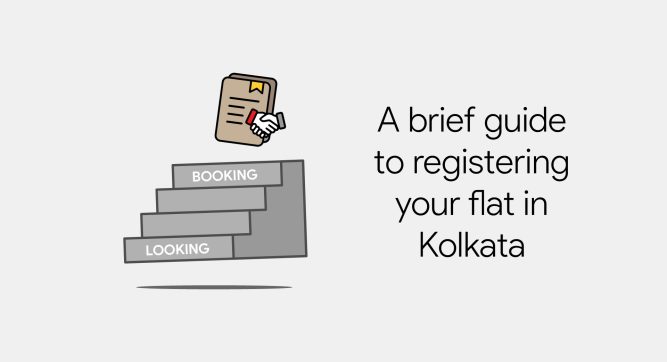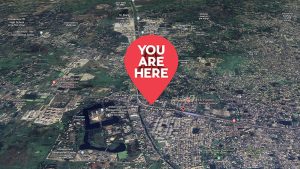BlogsAll about beautiful living
- Categories
Register your flat in Kolkata #1: The Offline Way – a blog series with Gems City

September 2023 marked a notable surge in apartment registrations in Kolkata, predominantly driven by mid-size and large flats. These registrations, constituting 14% of the total for the first nine months, underscored a robust real estate market. According to the West Bengal Directorate of Registrations and Stamps Revenue, 4,347 homes were registered in the preceding month, reflecting a substantial 21% increase compared to the 3,605 flats registered in August 2023.
Knight Frank India, a leading real estate consultancy firm, projected continued growth, citing factors such as the Reserve Bank of India maintaining the repo rate. Additionally, the West Bengal government’s decision to extend the stamp duty reduction until March 31, 2024, has buoyed property purchases, injecting further momentum into the market.
Amidst this flourishing real estate scenario, Mr Saibal Ghosh, an adman by profession, entered the narrative. Having secured a flat in the Phase 1 stage of Gems City Joka, South Kolkata’s sought-after township sprawling over 50 acres, Mr Ghosh found himself amidst a blend of anxiety and joy. The prospect of navigating bureaucratic procedures clashed with the excitement of becoming the owner of a new flat at Gems City. Eager to proceed, Mr Ghosh delved into the steps of the registration process.
In Kolkata, the West Bengal government is the regulatory authority overseeing the laws and regulations pertaining to flat registration. Property buyers are offered the convenience of registering the sale deed online, streamlining the calculation and payment of stamp duty and registration fees through net banking.
Mr Ghosh uncovered six essential steps involved in the offline flat registration process in Kolkata. The first step revolves around determining the stamp duty amount, a critical factor subject to state-imposed taxes. It is either a percentage of the property’s value or the prevailing circle rate, depending on which is higher.
Step two involves the preparation of the sales deed, a pivotal document in the registration process. Mr Ghosh learned that the sales deed must be meticulously typed on stamp paper, obtainable from vendors or online sources, and necessitates the involvement of a competent attorney for legal validity.
Step three encompasses gathering the requisite documents, including address proof, government-approved ID, a No Objection Certificate (NOC) for the property, passport-size images, recent tax payment receipts, bank statements if applicable, approved building plans, and the owner’s title deeds.
Moving on to step four, Mr Ghosh discovered the necessity of scheduling a meeting with the sub-registrar, as property registration mandates their presence, alongside the original signatory of the sales deed and two witnesses.
Step five involves the payment of registration fees, activated after the sub-registrar validates the documents and stamp duty payment. The cost was set at 1.5% of the property value for reservations made within four months of signing the sales deed. To Mr Ghosh’s delight, the validation and payments took less than an hour at the sub-registrar’s office since all previous steps had been meticulously followed.
The final step, step six, which involved collecting the registered documents was over by the next day! Once approved by the sub-registrar, the original paperwork is returned, with copies retained for archival purposes to document property ownership. Mr Ghosh’s delighted expression knows no bounds as a broad smile graces his contented face!
In the forthcoming blog, we will delve into the details of online flat registration in Kolkata, exploring the streamlined steps involved in this digital process.
You Might Like...
-
 22 July, 2024
22 July, 2024What Makes Joka a Prime Location for Property Investment?
With the Joka-Esplanade Metro line looming large...more
-
 28 June, 2024
28 June, 2024Finding the Perfect Family Home: Is it Child Friendly?
Choosing the right home for your family is one of the most crucial...more
